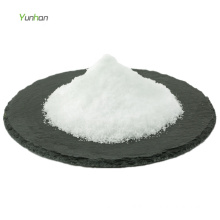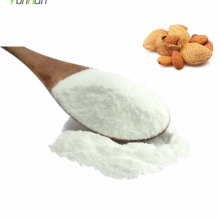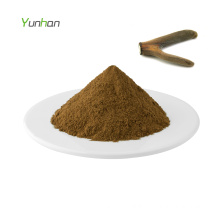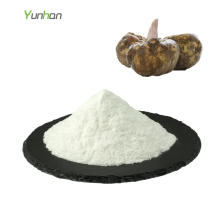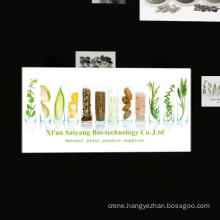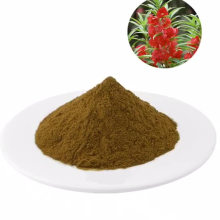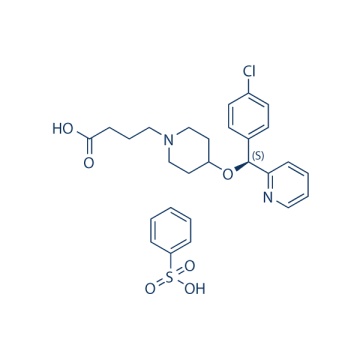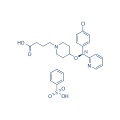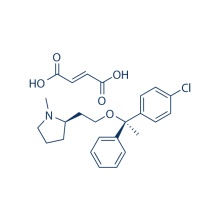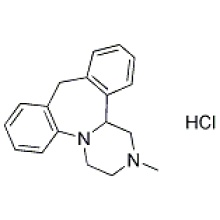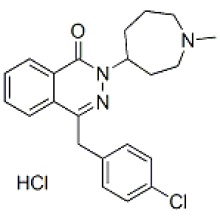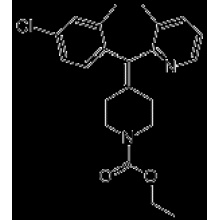Bepotastine Besilate 190786-44-8
Product Description
.cp_wz table {border-top: 1px solid #ccc;border-left:1px solid #ccc; } .cp_wz table td{border-right: 1px solid #ccc; border-bottom: 1px solid #ccc; padding: 5px 0px 0px 5px;} .cp_wz table th {border-right: 1px solid #ccc;border-bottom: 1px solid #ccc; padding: 5px 0px 0px 5px;}
Molecular Weight: 547.06 Bepotastine is a non-sedating, selective antagonist of histamine 1 (H1) receptor with pIC50 of 5.7.
The flux ratios of [14C]Bepotastine (5 μM) in LLC-GA5-COL150 cells are
significantly greater than those in LLC-PK1, showing that the B-to-A
flux exceeds those in the other direction in LLC-GA5-COL150 cells.
Bepotastine stimulates P-gp-mediated ATP hydrolysis with Km, Vmax, and
Vmax/Km values of 1.25 mM, 108 nmol/min/mg protein, and 0.087 mL/min/mg
protein, respectively. Bepotastine besilate (100 mM)
suppresses Leukotriene B(4) induced Ca(2+) concentration in cultured
dorsal root ganglion neurons and cultured neutrophils. Bepotastine (100 μM) dose-dependently inhibits chemotaxis of cultured
guinea pig peritoneal eosinophils induced by LTB4. Bepotastine (1 mM)
significantly reduces A23187-induced histamine release of cultured rat
peritoneal mast cells.
Bepotastine (0.8 mg/kg) administrated in WT and P-gp KO mice results in
the plasma total concentrations 580 ng/mL and 467 ng/mL at 6 min after
dosing, respectively, and the plasma protein binding with 41.1% and
45.9%. The absorption of [14C]Bepotastine from the proximal region in
the presence and absence of verapamil is 63.0% and 72.4%, respectively,
and that from the distal region is 10.9% and 62.7%, respectively. Bepotastine besilate (10 mg/kg) inhibits scratching induced by an
intradermal injection of histamine (100 nmol/site), but not serotonin
(100 nmol/site). Bepotastine besilate (1 mg/kg-10 mg/kg, oral)
dose-dependently suppresses scratching induced by substance P (100
nmol/site) and leukotriene B(4) (0.03 nmol/site).
Bepotastine besilate significantly inhibits conjunctival vascular
hyperpermeability in a dose-dependent manner in guinea pig allergic
conjunctivitis models with maximal effect for Bepotastine besilate 1.5%. Bepotastine (3 mg/kg and 10 mg/kg) effectively inhibits
the compound 48/80-induced scratching behavior of BALB/c mice 1 hour
after oral administration. Bepotastine (10 mg/kg) also significantly
inhibits the scratching behavior and suppresses the serum LTB(4) levels
in atopic dermatitis model NC/Nga mice.
Conversion of different model animals based on BSA (Value based on data from FDA Draft Guidelines)
For example, to modify the dose of resveratrol used for a mouse (22.4 mg/kg) to a dose based on the BSA for a rat, multiply 22.4 mg/kg by the Km factor for a mouse and then divide by the Km factor for a rat. This calculation results in a rat equivalent dose for resveratrol of 11.2 mg/kg.
Contact us if you need more details on 190786-44-8. We are ready to answer your questions on packaging, logistics, certification or any Other aspects about 190786-44-8 Bepotastine Besilate、Bepotastine Besilate 190786-44-8. If these products fail to match your need, please contact us and we would like to provide relevant information.
Molecular Weight: 547.06 Bepotastine is a non-sedating, selective antagonist of histamine 1 (H1) receptor with pIC50 of 5.7.
The flux ratios of [14C]Bepotastine (5 μM) in LLC-GA5-COL150 cells are
significantly greater than those in LLC-PK1, showing that the B-to-A
flux exceeds those in the other direction in LLC-GA5-COL150 cells.
Bepotastine stimulates P-gp-mediated ATP hydrolysis with Km, Vmax, and
Vmax/Km values of 1.25 mM, 108 nmol/min/mg protein, and 0.087 mL/min/mg
protein, respectively. Bepotastine besilate (100 mM)
suppresses Leukotriene B(4) induced Ca(2+) concentration in cultured
dorsal root ganglion neurons and cultured neutrophils. Bepotastine (100 μM) dose-dependently inhibits chemotaxis of cultured
guinea pig peritoneal eosinophils induced by LTB4. Bepotastine (1 mM)
significantly reduces A23187-induced histamine release of cultured rat
peritoneal mast cells.
Bepotastine (0.8 mg/kg) administrated in WT and P-gp KO mice results in
the plasma total concentrations 580 ng/mL and 467 ng/mL at 6 min after
dosing, respectively, and the plasma protein binding with 41.1% and
45.9%. The absorption of [14C]Bepotastine from the proximal region in
the presence and absence of verapamil is 63.0% and 72.4%, respectively,
and that from the distal region is 10.9% and 62.7%, respectively. Bepotastine besilate (10 mg/kg) inhibits scratching induced by an
intradermal injection of histamine (100 nmol/site), but not serotonin
(100 nmol/site). Bepotastine besilate (1 mg/kg-10 mg/kg, oral)
dose-dependently suppresses scratching induced by substance P (100
nmol/site) and leukotriene B(4) (0.03 nmol/site).
Bepotastine besilate significantly inhibits conjunctival vascular
hyperpermeability in a dose-dependent manner in guinea pig allergic
conjunctivitis models with maximal effect for Bepotastine besilate 1.5%. Bepotastine (3 mg/kg and 10 mg/kg) effectively inhibits
the compound 48/80-induced scratching behavior of BALB/c mice 1 hour
after oral administration. Bepotastine (10 mg/kg) also significantly
inhibits the scratching behavior and suppresses the serum LTB(4) levels
in atopic dermatitis model NC/Nga mice.
Conversion of different model animals based on BSA (Value based on data from FDA Draft Guidelines)
| Species | Baboon | Dog | Monkey | Rabbit | Guinea pig | Rat | Hamster | Mouse |
| Weight (kg) | 12 | 10 | 3 | 1.8 | 0.4 | 0.15 | 0.08 | 0.02 |
| Body Surface Area (m2) | 0.6 | 0.5 | 0.24 | 0.15 | 0.05 | 0.025 | 0.02 | 0.007 |
| Km factor | 20 | 20 | 12 | 12 | 8 | 6 | 5 | 3 |
| Animal A (mg/kg) = Animal B (mg/kg) multiplied by | Animal B Km |
| Animal A Km |
For example, to modify the dose of resveratrol used for a mouse (22.4 mg/kg) to a dose based on the BSA for a rat, multiply 22.4 mg/kg by the Km factor for a mouse and then divide by the Km factor for a rat. This calculation results in a rat equivalent dose for resveratrol of 11.2 mg/kg.
| Rat dose (mg/kg) = mouse dose (22.4 mg/kg) × | mouse Km(3) | = 11.2 mg/kg |
| rat Km(6) |
Contact us if you need more details on 190786-44-8. We are ready to answer your questions on packaging, logistics, certification or any Other aspects about 190786-44-8 Bepotastine Besilate、Bepotastine Besilate 190786-44-8. If these products fail to match your need, please contact us and we would like to provide relevant information.
Product Categories : Neuronal Signaling > Histamine Receptor Inhibitor
Other Products
Hot Products
Astragaloside AChlortetracycline HCl 64-72-2Paclitaxel 33069-62-4Dexamethasone Acetate 1177-87-3Dinaciclib (SCH727965) 779353-01-4CHIR-124 405168-58-3Ro3280 1062243-51-9TAME 901-47-3CCG-1423 285986-88-110058-F4 403811-55-2Dabigatran (BIBR 953) 211914-51-1H 89 2HCl 130964-39-5T0901317 293754-55-9Aprepitant 170729-80-3Turofexorate Isopropyl (XL335) 629664-81-9BMS-378806 357263-13-9
